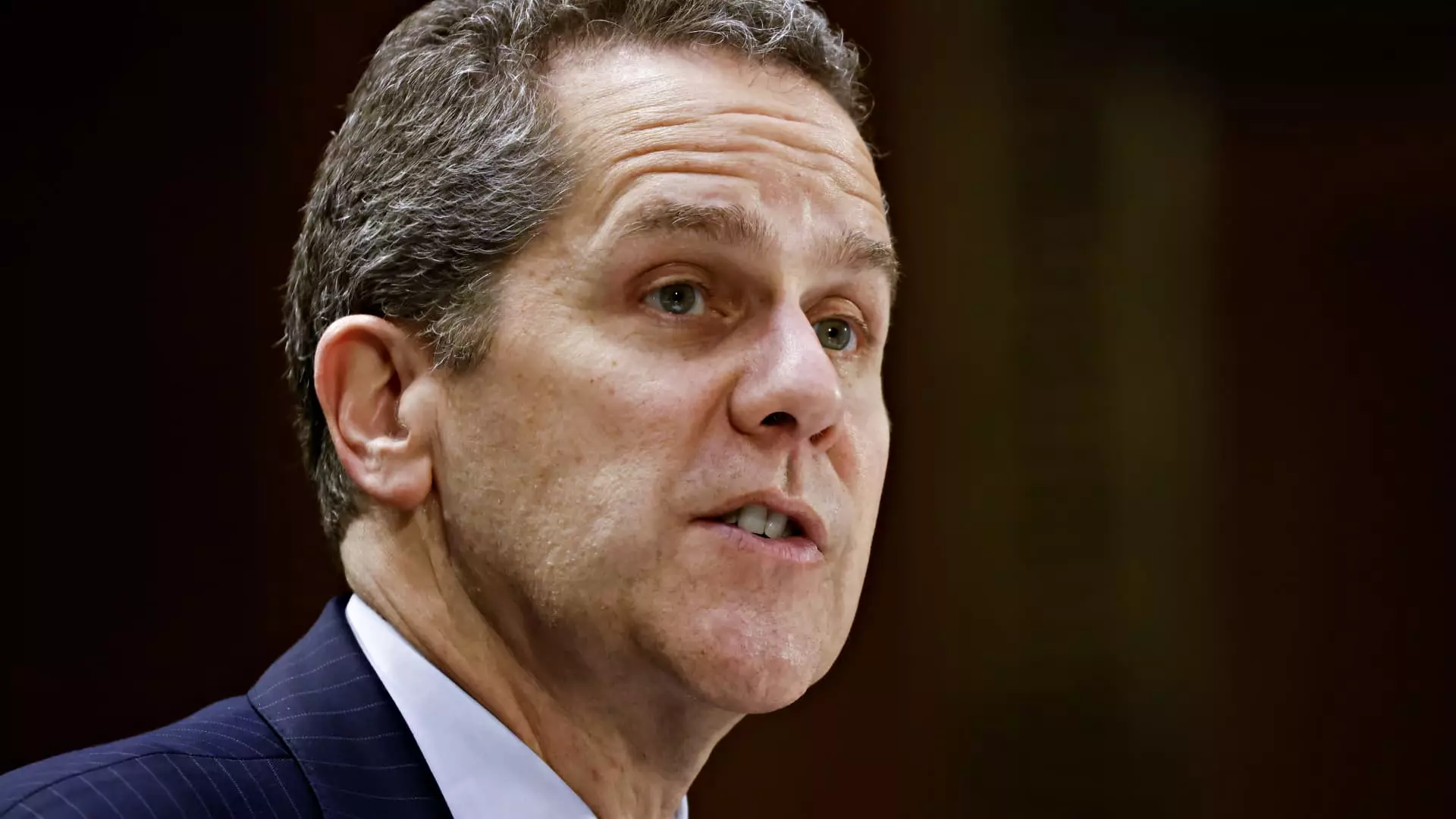The impending resignation of Michael Barr from his role as the vice chair for supervision at the Federal Reserve marks a significant shift in the regulatory landscape of the U.S. banking system. Scheduled to take effect on February 28, his departure not only allows President-elect Donald Trump the opportunity to appoint a successor but also averts a potential confrontation that could have arisen from the incoming administration’s contrasting approach to banking regulation. Barr’s decision to step down will enable a smoother transition, particularly as speculation mounts regarding Trump’s intention to appoint someone more amicable towards the banking industry.
Barr, however, will not sever all ties with the Fed; he retains his position as a governor on the board until 2026. His statement emphasized the necessity of focusing on the Fed’s core mission instead of battling over his role. The tone of Barr’s comments suggests that he recognizes the politically charged environment that surrounds the Federal Reserve, highlighting that continuity and stability should serve as paramount concerns during a high-stakes transition.
Following the announcement of Barr’s resignation, there was a noticeable positive reaction in the financial markets, with bank stocks experiencing a rally. Such responses are indicative of investor sentiment towards regulatory uncertainty and the anticipated favorability of new leadership. The SPDR S&P Bank exchange-traded fund, which tracks major banking institutions, gained significant traction post-announcement, reflecting optimism about forthcoming regulatory changes.
The Fed’s decision to temporarily halt major regulatory reforms until Barr’s successor is named further amplifies the sense of uncertainty prevailing in the industry. The indeterminate timeline for the introduction of new regulations, especially concerning the Basel Endgame — a set of rules unpopular among banking institutions — raises questions about the Fed’s operational efficacy during this transitionary phase. Stakeholders within the banking sector will be keenly observing the selection of Barr’s successor and how their policies may differ from the current regulatory framework.
Barr’s tenure, including a tumultuous period marked by the crisis at Silicon Valley Bank in 2023, underscores the complex interplay between regulatory oversight and financial stability. His leadership coincided with critical moments where rapid interventions were necessary to prevent the contagion of financial instability. This context becomes crucial when evaluating the expectations around his successor, who may potentially inherit not just a regulatory framework affected by past tumult but also a renewed mandate to recalibrate the relationship between the Fed and the banking industry.
As Trump prepares to take office, the choice of Barr’s replacement will serve as an early indicator of his administration’s stance on financial regulation. Will the new appointee adopt a more lenient approach that caters to banking interests, or will they maintain a vigilant stance to ensure that past oversights do not reoccur? These are the pivotal questions looming in the air, capturing the attention of policymakers, financial analysts, and consumers alike.
Michael Barr’s resignation sets the stage for potentially transformative changes within the Federal Reserve. The focused attention on regulatory philosophies will not only shape the stability of the banking sector but also reflect broader economic priorities in the coming years.

